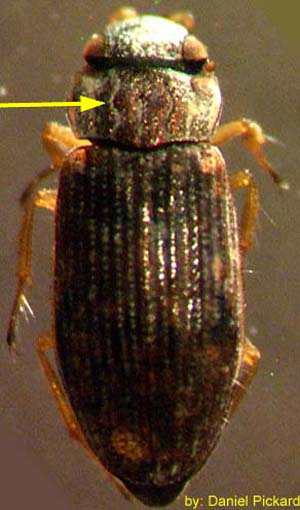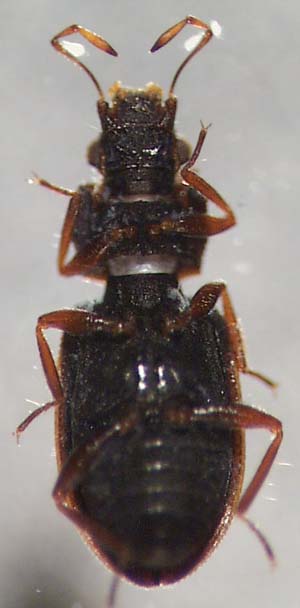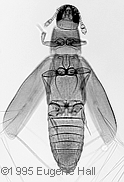
THE XERCES SOCIETY FOR INVERTEBRATE CONSERVATION Aquatic Invertebrates in Pacific Northwest Freshwater Wetlands |
| Identify taxa |
| Helophoridae (helophorid beetles) Adults antennae have a 3-segmented club; the pronotum has 5 lengthwise grooves. Larvae have elongate pale bodies with noticeable mandibles; tip of abdomen may have two tails. |
 |
||
| Hydraenidae (minute moss beetles) Adults are very small (1-2.5 mm); last 5 segments of the antennae are enlarged. The labial palps are often enlarged as in Hydrophilidae and may be mistaken for antennae, which are tucked underneath the head. Larvae have a ten-segmented abdomen with two small tails that extend backward from segment nine and around either side of segment ten. Segment ten has two curved hooks underneath. |
 |
||
| Hydrochidae (hydrochid beetles) Adult antennae have a 3-segmented club with a cup-like base; eyes protrude from the sides of the head. The pronotum lacks grooves (like Helophoridae) and the back edge is clearly narrower than the elytra. Larvae are similar to Hydrophilidae and lack filaments; mandibles attach to the head between the antennae. |
  |
||
Ptiliidae |
   |
||
| Psephenidae (water pennies) Adults are generally oval, slightly flattened, and soft bodied. The antennae vary; segments may be similar in size (sometimes all enlarged) or have long, comb-like extensions. Larvae are much more commonly found than adults. Larvae have distinctive rounded, disc-like bodies with platelike extensions that conceal their head and legs. |
  |
© 2007 Xerces Society
Contact info@xerces.org